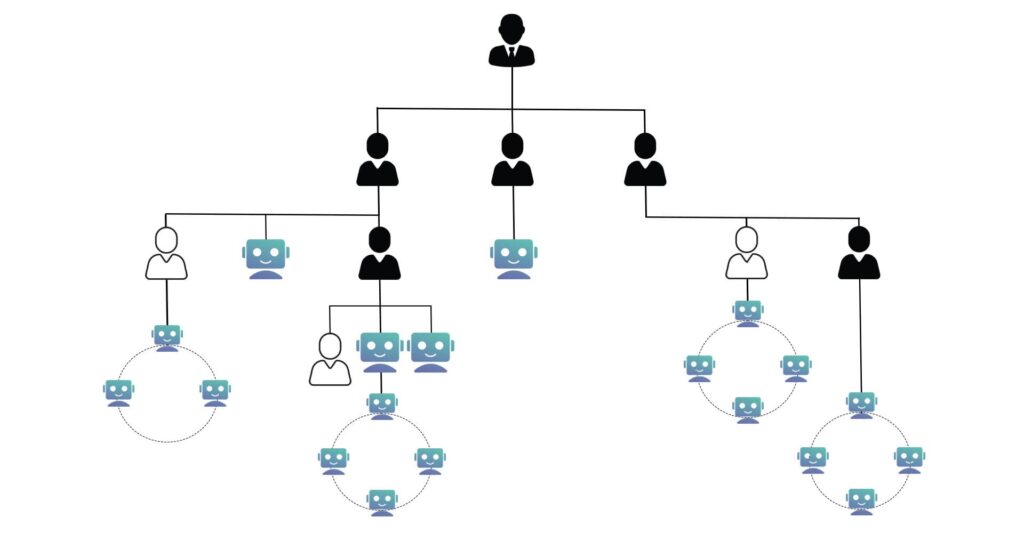
How We Got Here
For decades, companies have followed a simple model.
At the top: a few ultra-generalists—visionaries who steer the ship.
Below them: hyper-specialists, each focused on one task. They do what they do well. Their knowledge runs deep but narrow.
At the bottom: more specialists. Few tools. Fewer machines. Most tasks require human execution.
This was the norm. Efficient, hierarchical, predictable.
Until now.
The Shift Is Already Here
Look around.
AI isn’t coming. It’s here.
And it’s not replacing everyone—it’s transforming everything.
The new company chart isn’t just humans stacked in tiers. It’s ultra-generalists, hyper-specialists, and AI agents—all working in a decentralized, dynamic way.
At each layer, AI doesn’t just assist. It executes.
AI systems now handle scheduling, research, design mockups, even code. Hyper-specialists now lead teams of AI agents. Ultra-generalists lead humans and machines.
What once took a team of ten can now be done by two people—with a dozen AI systems running 24/7 beneath them.
The Anatomy of the New Team
- Ultra-Generalists: They make high-level decisions. They understand both people and machines. They’re visionaries with cross-domain fluency.
- Hyper-Specialists: They train, prompt, and orchestrate AI. They’re not doing all the work—they’re conducting it.
- AI Agents: Not just tools. These are self-improving systems. They handle tasks with precision, speed, and scale.
- AI Systems: These are more than bots. They’re frameworks—reliable, scalable, integrated into every layer of the business.
Why It Matters
This isn’t about automation. It’s about augmentation.
Companies that adapt will operate with unmatched efficiency. Those who don’t will fall behind—not slowly, but suddenly.
It’s not about man versus machine. It’s man with machine. A partnership.
The winners will be those who learn to delegate—not only to people but to programs.
Real-World Implications
- Fewer but smarter teams
Teams will shrink. Capability will grow.
- Faster decision-making
AI filters noise. Humans act on signal.
- Flat structures
AI levels the field. Fewer middle layers.
- New skills in demand
Prompt design, AI orchestration, ethical oversight. This is the new literacy.
What You Can Do Now
- Learn to work with AI, not fear it.
- Understand the basics of automation and prompting.
- Restructure your team to include AI—not just as a tool, but as a teammate.
Final Thought
The future isn’t tomorrow.
It’s today.
The new workforce is lean, fast, and hybrid—part human, part machine.
You’re not late. But the window is closing.
Make the shift. Or be left behind.
Want to learn more we can help.
Click here to find out how to build your own hybrid team.